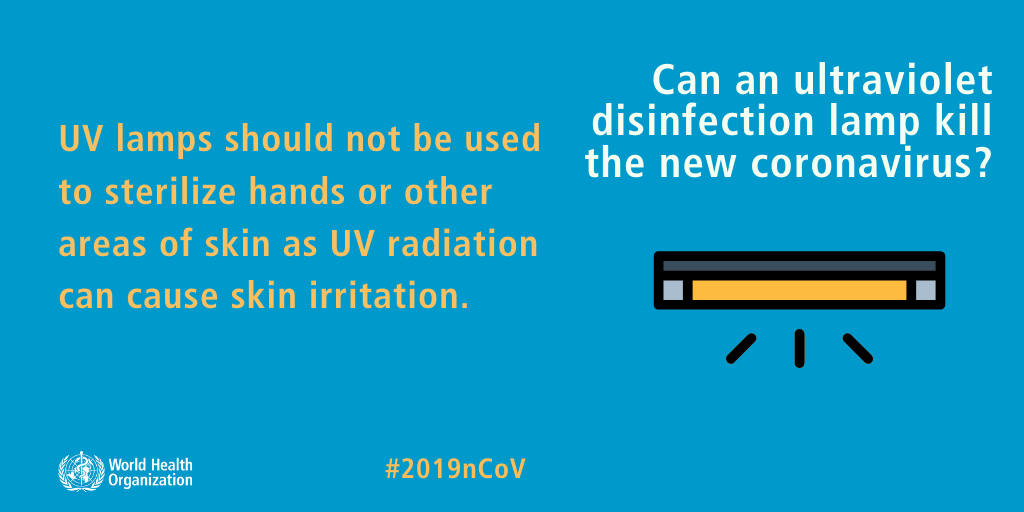ULTRA-VIOLET light can kill the coronavirus, scientists at China’s National Health Commission have confirmed.
They say the virus is sensitive to UV light and have verified that certain exposures will kill it.
The NHC’s latest advice says indoor rooms can be disinfected with UV light of over 1.5W/m3 used for half an hour. The exposure time should be increased if the room temperature is either below 20C or above 40C and relative humidity is over 60 per cent.
However, the World Health Organisation urged citizens not to use UV to disinfect their hands, as the levels needed to disinfect surfaces were harmful to skin.

Disinfection of public transport with UV light
In China, bus operators are giving their vehicles ‘UV baths’ as an extra level of protection after cleaners have wiped all surfaces.
“Shanghai public transport firm Yanggao has converted a regular cleaning room into a UV light disinfection chamber for buses – cutting a 40-minute process down to just five minutes.”
Read more on thestar.com
Germicidal UV light
According to the International Ultraviolet Association: ‘The portion of the UV spectrum (the ‘germicidal’ region) that is important for the disinfection of water and air is the range that is absorbed by DNA [RNA in the coronavirus]. This germicidal range is approximately 200-300nm.’
The germicidal range is known to extend beyond 280nm and is now generally thought to extend to 300nm, although this too may change with more research. Scientists have proved that wavelengths between 280nm and 300nm are germicidal and can be used for disinfection and sterilisation. There is a misconception that 254nm is the optimum wavelength for disinfection, but this is because the peak wavelength of a low-pressure mercury lamp (simply determined by the physics of the lamp) is 253.7nm.
A wavelength of 265nm is generally accepted as the optimum as it’s the peak of the DNA absorption curve. However, disinfection and sterilisation occur over a range of wavelengths.
The novel coronavirus is also susceptible to heat, and can become inactive after exposure to a temperature of 56 C for more than 30 minutes.
Additionally, it can be killed by chlorine-based disinfectants, ether solvents, 75 percent ethanol, peracetic acid and chloroform.
From original article on Lux Review.
Top picture: A bus is disinfected using UVC in Shanghai, China (Credit: Getty Images)

